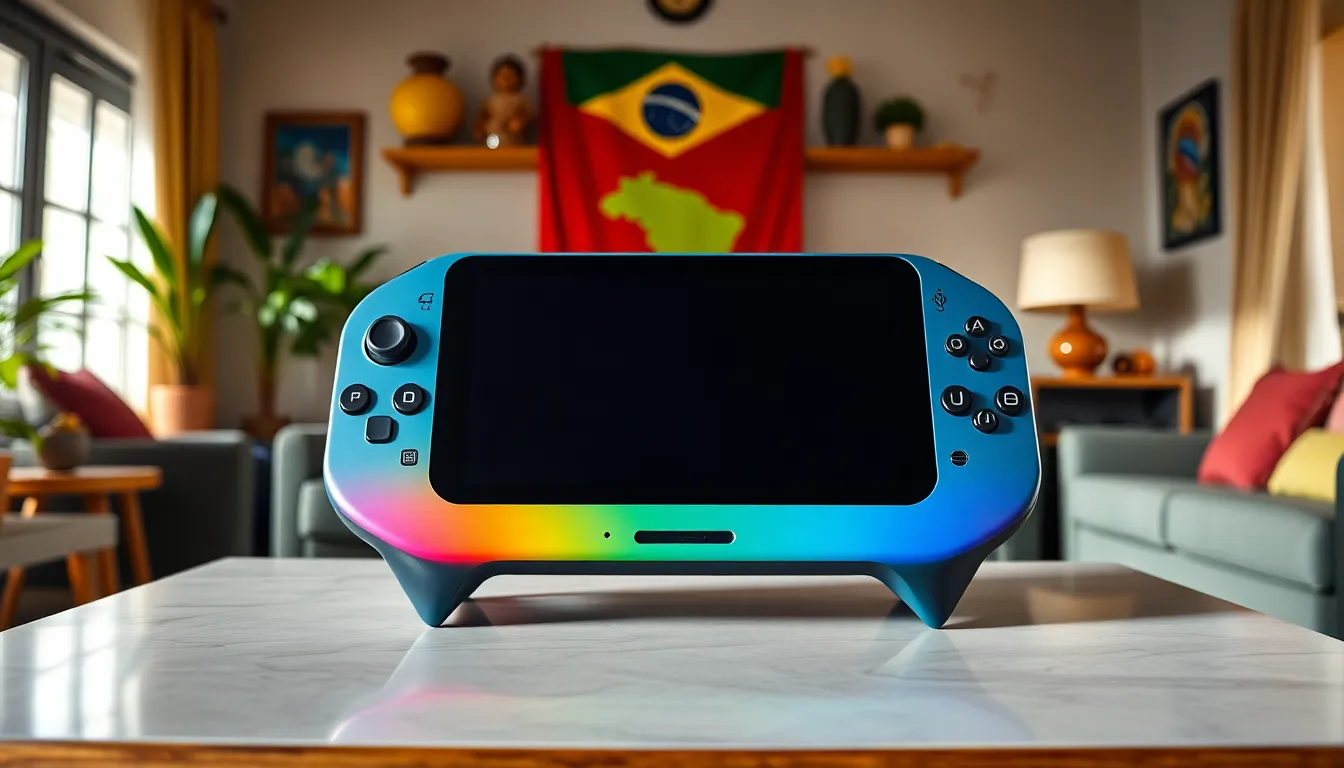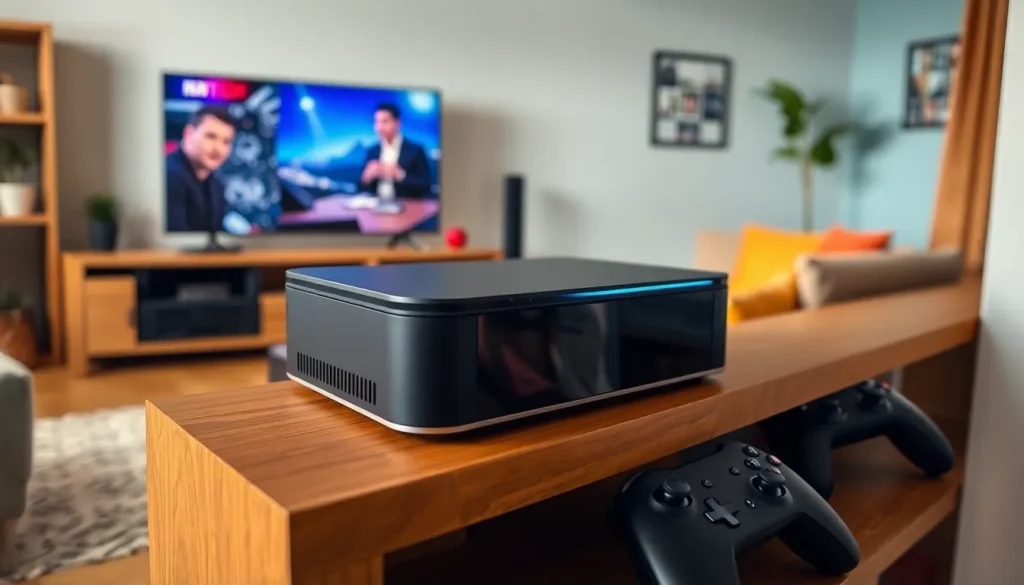In the world of gaming, there are consoles that set the stage and others that quietly slip into the shadows. Enter the Zeebo, a curious little device that aimed to revolutionize gaming in emerging markets. Released in 2009, this quirky console didn’t just want to play games; it wanted to bring gaming to the masses in Brazil and Mexico.
Imagine a console that combined the charm of retro gaming with the promise of online connectivity. It’s like your favorite childhood toy grew up, got a job, and decided to change the world. While it didn’t quite take the gaming world by storm, the Zeebo’s unique approach and bold ambitions make it a fascinating chapter in gaming history. So, buckle up as we dive into the story behind the Zeebo and its unexpected journey through the gaming landscape.
Table of Contents
ToggleOverview of Zeebo
Zeebo, released in 2009, positioned itself as an affordable gaming console targeting emerging markets, notably Brazil and Mexico. Its innovative design facilitated a unique gaming experience by blending retro charm and modern connectivity features. By eliminating the need for physical media, the Zeebo offered direct downloadable games, making purchases convenient for users. This approach aimed to reduce barriers to entry for gamers in regions where access to gaming consoles was limited.
A notable aspect of the Zeebo was its exclusive game library, which included titles appealing to local players. Games like Call of Duty: Modern Warfare and Sonic the Hedgehog showcased familiar franchises while catering to market preferences. Zeebo’s strategy focused on integrating educational and casual games, reflecting a commitment to engaging diverse audiences.
The console connected to the internet via mobile broadband, which was revolutionary for many users at the time. By leveraging mobile technology, Zeebo aimed to provide consistent access to new content and updates. Despite its ambitions, the console faced challenges stemming from competition and a lack of marketing support. Sales figures fell short of expectations, which contributed to its eventual discontinuation.
Zeebo’s journey within the gaming landscape serves as a case study in innovation and market adaptation. Understanding its impact helps illustrate how technology can influence gaming culture in underserved markets. The console, while not commercially successful, remains a subject of interest in discussions about accessibility and the evolution of gaming systems.
History of Zeebo Release

The Zeebo’s journey began with a desire to transform gaming access in emerging markets. Its development unfolded as the market for low-cost entertainment options grew.
Initial Announcement
Zeebo was first unveiled at the 2008 Game Developers Conference by Tectoy, aiming to cater to audiences in Brazil and Mexico. This announcement generated buzz within the gaming community, showcasing its innovative approach to digital downloads and unique game offerings. The console promised a different gaming experience focused on accessibility. Enthusiasts were intrigued by its emphasis on affordability and tailored game content designed for local players. Gamers quickly expressed interest in how the Zeebo would shift the dynamics of console gaming in these regions.
Official Launch Date
The official launch of the Zeebo occurred on June 2, 2009, marking a significant moment for both Tectoy and the gaming landscape. This date represented the culmination of extensive development and strategic planning. Initial sales focused on Brazil, tapping into a market eager for innovative technology. Customers could access the console’s unique features, including online connectivity and downloadable titles, from day one. Anticipation built as players awaited the chance to experience the exclusive library featuring popular franchises. Subsequent expansions aimed to bring the Zeebo to additional markets, though its impact remains firmly rooted in its initial release.
Features of Zeebo
The Zeebo offered a variety of features that set it apart in the gaming market. It combined retro gaming elements with modern technology to meet the needs of emerging markets.
Hardware Specifications
Unique hardware specifications characterized the Zeebo. The console included a 1.2 GHz ARM Cortex A8 processor, delivering decent performance for its time. Graphics support came from a PowerVR SGX531 GPU. It featured 512 MB of RAM and 1 GB of onboard storage, expandable via SD card. The design emphasized portability and affordability, making it accessible for users in Brazil and Mexico. Connectivity relied on mobile broadband networks, allowing for seamless downloads of games and updates.
Game Library
An exclusive game library defined the Zeebo’s appeal. Popular titles included Call of Duty: Modern Warfare and Sonic the Hedgehog, catering to local gaming preferences. Educational and casual games also featured prominently, broadening its audience. The focus on culturally relevant content helped foster engagement among players. Downloadable games eliminated the need for physical media, enhancing convenience. Players enjoyed a diverse range of options, tailored to the unique tastes of the Brazilian and Mexican markets.
Impact on Gaming Industry
The Zeebo’s launch in 2009 marked a significant shift in how gaming companies approached emerging markets. It targeted regions like Brazil and Mexico, where traditional gaming consoles often proved too expensive. Accessible pricing and downloadable games made gaming more attainable for players lacking physical media options.
Unique factors distinguished the Zeebo from other consoles. Exclusive game titles catered to local preferences, incorporating popular franchises and culturally relevant content. Such strategies fostered community engagement and boosted excitement among gamers. By focusing on educational and casual games, it appealed to a broader demographic.
Mobile broadband integration showcased another innovation. This capability allowed users to access updates and new content seamlessly. Connectivity became a vital element in keeping the console relevant, ensuring players remained connected within an evolving gaming ecosystem.
Despite these advantages, the Zeebo faced formidable challenges. Competition with established gaming consoles hindered its growth in the market. Insufficient marketing limited awareness, preventing its innovative features from reaching potential buyers. The console’s sales figures reflected these issues, prompting an early discontinuation.
The Zeebo’s impact extended beyond direct sales. It provided valuable insights into market adaptation techniques, highlighting the importance of affordability and localization in emerging markets. Many industry observers recognized the significance of its approach, viewing it as a case study for future gaming innovations aimed at underserved regions. Devices like the Zeebo paved the way for understanding how technology can reshape gaming culture, even when faced with commercial hurdles.
The Zeebo’s release in 2009 marked a pivotal moment in the gaming industry, particularly for emerging markets. Its focus on affordability and accessibility resonated with players in Brazil and Mexico, providing a unique gaming experience tailored to local needs. Despite the challenges it faced, the Zeebo’s innovative approach to downloadable content and exclusive titles highlighted the potential for growth in underserved regions.
While the console ultimately fell short of commercial success, its legacy offers valuable lessons for future gaming endeavors. The Zeebo’s journey underscores the importance of understanding market dynamics and adapting products to meet the specific demands of diverse audiences.





